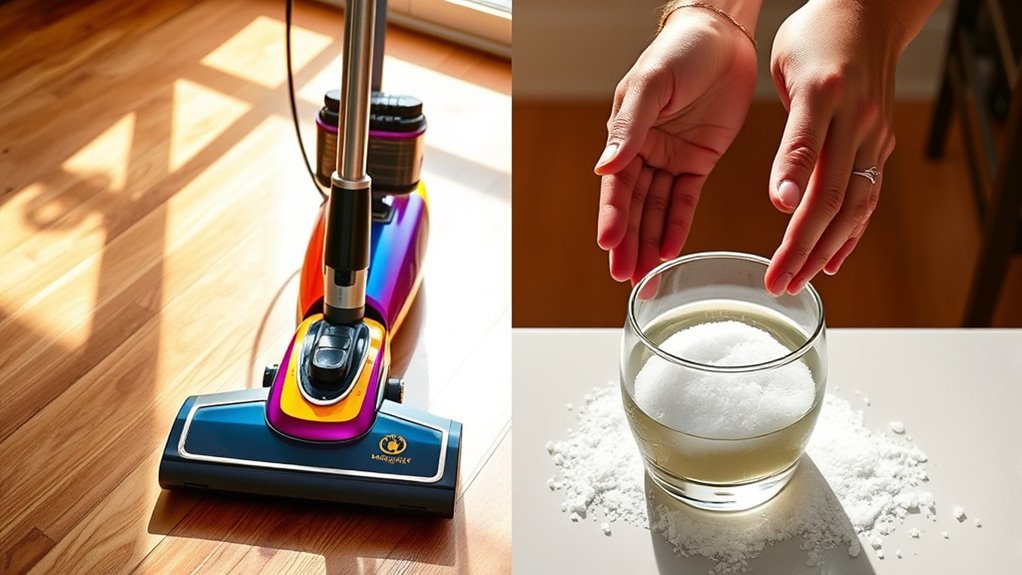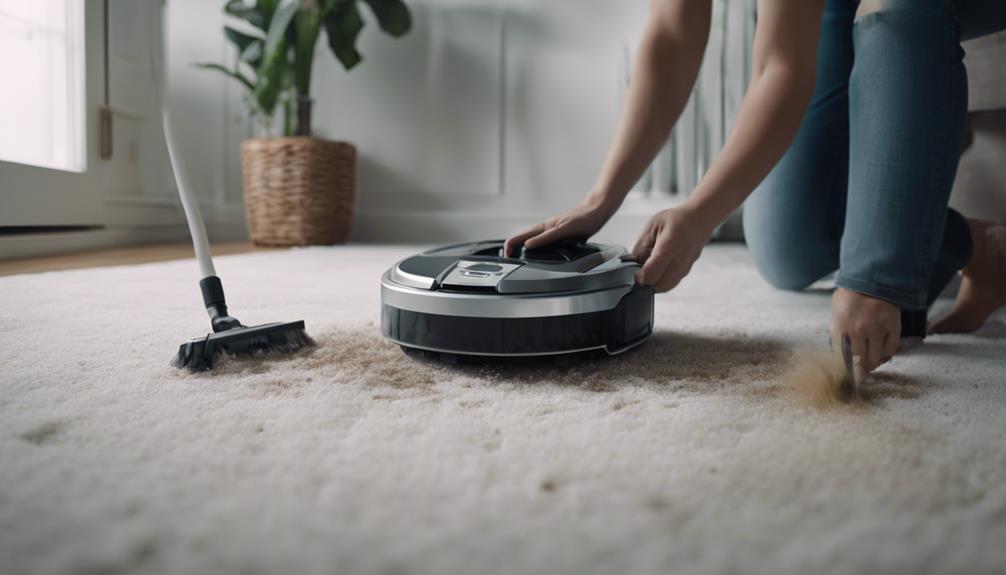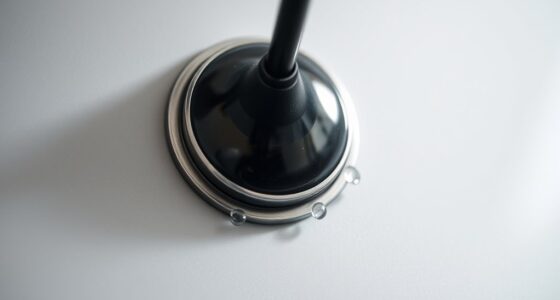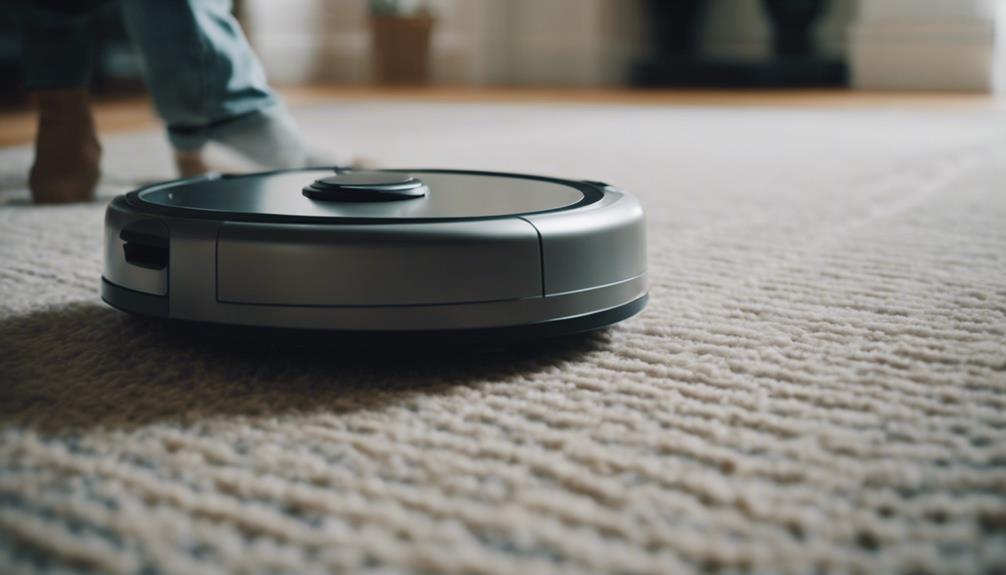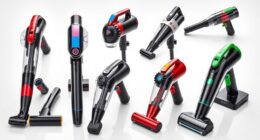To extend your vacuum’s lifespan, make regular maintenance a priority. Clean or replace the filters every few weeks and empty the dust container when it’s three-quarters full. Taking care of the brushes and accessories is key, too. Always check for clogs that can lead to overheating. By staying proactive about these simple tasks, you’ll enhance your vacuum’s performance. Stay tuned for more tips that’ll help you keep your vacuum in top shape!
Key Takeaways
- Regularly clean or replace filters every 2 to 3 weeks to maintain optimal suction and air quality.
- Empty the dust container when it’s over 3/4 full to prevent clogs and maintain suction power.
- Inspect and clean brushes after each use to remove hair and debris, enhancing efficiency.
- Allow the vacuum to cool down for 15 to 20 minutes after prolonged use to prevent overheating.
- Store the vacuum in a cool, dry place away from humidity to avoid damage and extend its lifespan.
Understanding Your Vacuum’s Components
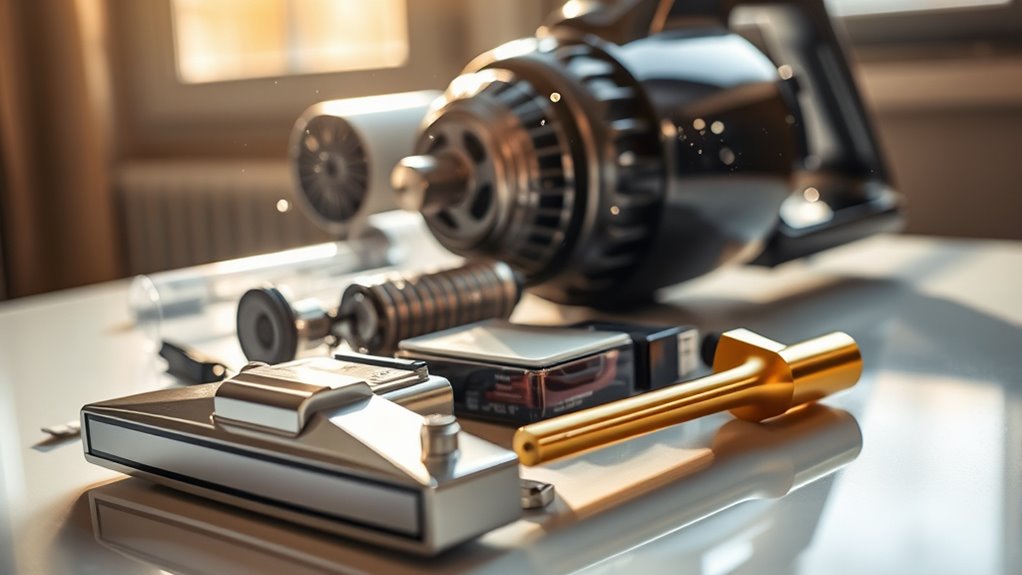
Your vacuum’s components are vital for keeping it running smoothly and efficiently. The motor, the heart of your vacuum, needs occasional breaks to prevent overheating and prolong its lifespan. Regular maintenance is important, so make it a habit to clean or replace your filters every 2 to 3 weeks. This guarantees ideal airflow and suction power, reducing strain on the motor. Additionally, using a vacuum with HEPA filters can significantly enhance air quality while maintaining proper suction. Regularly checking the filtration systems ensures they are functioning correctly, which can also improve overall performance. Don’t forget to check the brushes and hoses for clogs and debris; blockages can diminish effectiveness and lead to increased wear on parts. Each vacuum type has unique components that require specific care, like emptying dustbins or checking battery health for cordless models. For instance, vacuums designed for hardwood floors might have specialized attachments that require unique maintenance routines. Understanding these elements is key to maximizing your vacuum’s longevity. For example, advanced filtration systems are essential for capturing allergens and maintaining a healthy indoor environment. Moreover, implementing regular cleaning schedules can help ensure that your vacuum operates at peak efficiency and prolongs its overall lifespan.
Importance of Regular Cleaning
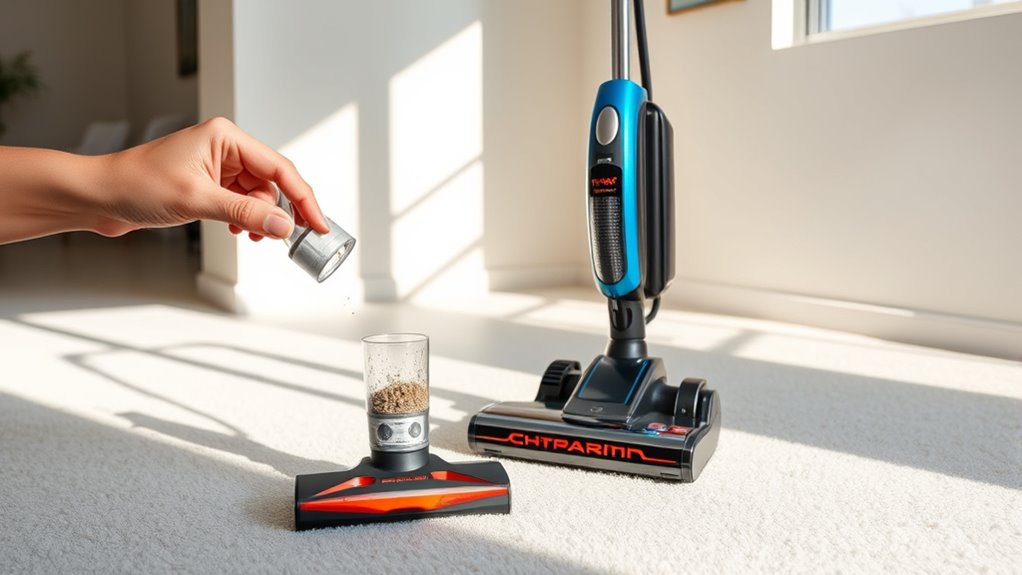
Regular cleaning of your vacuum is essential for maintaining its performance and extending its lifespan. By setting a routine to clean brushes, filters, and the dustbin, you’ll notice improved suction and efficiency. Additionally, this practice supports a healthier lifestyle by ensuring that your vacuum is effective in removing allergens and pollutants from your home. Regular maintenance can also help prevent issues commonly associated with high suction power vacuums, which ensures they continue to perform optimally. To further enhance your vacuum’s efficiency, consider implementing consistent maintenance practices similar to those recommended for air purifiers. Furthermore, maintaining your vacuum regularly can lead to better overall performance over time, ensuring that it remains a reliable tool in your cleaning arsenal. Regular filter replacement, as suggested for air purifiers, can significantly improve your vacuum’s filtration efficiency. Let’s explore how often you should clean these components to keep your vacuum running smoothly.
Benefits of Regular Maintenance
While regular maintenance might seem like an added chore, it’s essential for keeping your vacuum running efficiently and extending its lifespan.
By cleaning filters and brushes regularly, you can greatly improve suction power and reduce strain on the motor. Emptying the dustbin after each use is vital, too; a full bin can hinder performance and cause overheating. Additionally, changing filters regularly as you do with air purifiers can prevent dust buildup and maintain optimal performance. Studies show that appliances with regular maintenance are less likely to experience performance issues. Moreover, maintaining your vacuum’s components can lead to a more efficient operation, similar to how airless paint sprayers provide a smooth finish with minimal effort. Regularly checking and cleaning non-combustible materials around appliances can also enhance safety and efficiency.
Additionally, checking hoses and roller brushes every couple of weeks minimizes blockages, enhancing overall efficiency. Don’t forget to routinely inspect and replace worn-out parts like belts and filters to prevent further damage. Establishing a consistent maintenance schedule not only keeps your vacuum operating effectively but also helps identify potential issues before they lead to costly repairs. Regular maintenance can extend appliance lifespan by up to 50%, ensuring you get the most out of your investment.
Cleaning Frequency Recommendations
To keep your vacuum performing at its best, adjusting your cleaning frequency based on household activity is essential.
If your home sees a lot of foot traffic or has kids and pets, daily vacuuming is recommended to prevent dirt buildup. For less active spaces, aim for at least twice a week.
Regular vacuuming not only keeps your floors clean but also helps prolong the life of both your carpet and vacuum cleaner. Additionally, HEPA filtration in air purifiers can assist in maintaining overall air quality, which complements your vacuuming efforts. Maintaining indoor air quality can also reduce the amount of dust and allergens that settle on your floors. Consider incorporating floral arrangements into your decor, as they can enhance the overall ambiance of your home, making it feel cleaner and more inviting. It is also important to be aware of routine health checks for your vacuum to ensure all parts are functioning properly. Utilizing the right maintenance techniques can significantly enhance your vacuum’s efficiency.
Prioritize high-traffic areas like living rooms and playrooms to maintain cleanliness and extend vacuum lifespan. Brief daily sessions can reduce strain on the motor.
Don’t forget to regularly clean your vacuum’s components, such as brushes and filters, to optimize performance and prevent premature wear. Regular cleaning of your vacuum’s filters should be cleaned to ensure optimal performance and longevity.
Monitoring Filters and Dust Containers
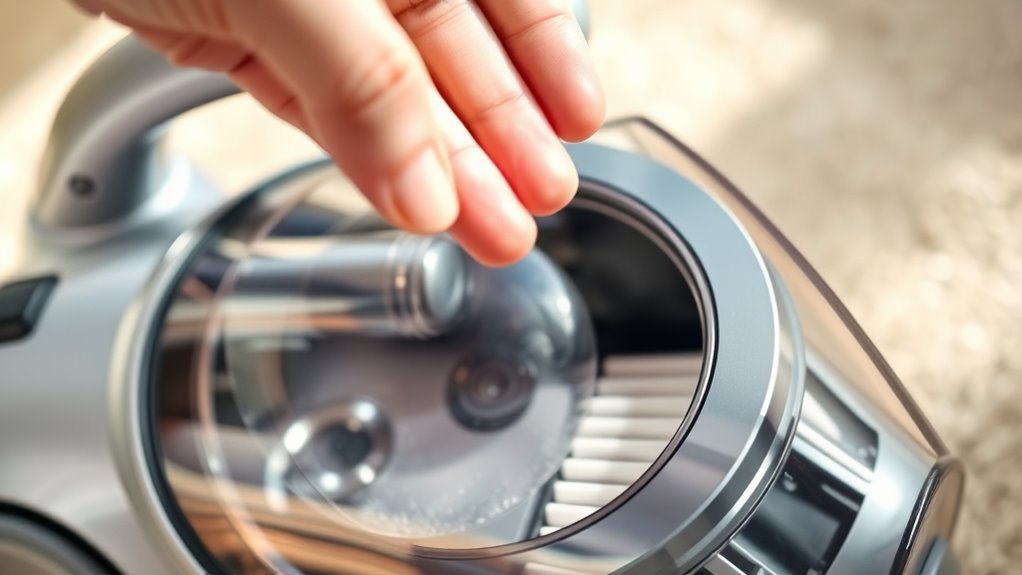
Maintaining ideal suction in your vacuum cleaner hinges on how well you monitor its filters and dust containers. Regularly empty the dust container when it’s more than 3/4 full to maintain peak suction and prevent motor strain. Additionally, keeping your vacuum in good condition aligns with the principles of sustainable fashion, which emphasizes the importance of longevity and durability in products. Proper maintenance can also be compared to regular checks on toilet functionality, as both ensure optimal performance and efficiency.
If you have a canister vacuum, replace the bag immediately when it looks full to avoid clogs. For upright vacuums, clean or replace filters every 2 to 3 weeks, as dirty filters can greatly reduce airflow and performance. If you own a robot vacuum, empty the dust tray after each cleaning session since their smaller bins fill up quickly. Keeping filters and dust containers clean can extend your vacuum’s lifespan by preventing overheating and mechanical issues, ensuring it runs efficiently for years to come. Additionally, regularly checking filters can enhance overall performance and efficiency.
Keeping Brushes and Accessories in Check

Your vacuum’s performance heavily depends on how well you keep its brushes and accessories in check.
Regularly inspect and clean the main brush and side brushes after each use to avoid hair and debris buildup that can hinder suction power. Use a knife or comb to carefully remove tangled hair, enhancing your vacuum’s efficiency and extending its lifespan.
Check the wheels and hoses for blockages or wear at least once a month to guarantee smooth operation.
Don’t forget to clean or replace removable accessories, like filters and brush rolls, according to the manufacturer’s guidelines—typically every 2 to 3 weeks for filters.
Preventing Overheating Issues
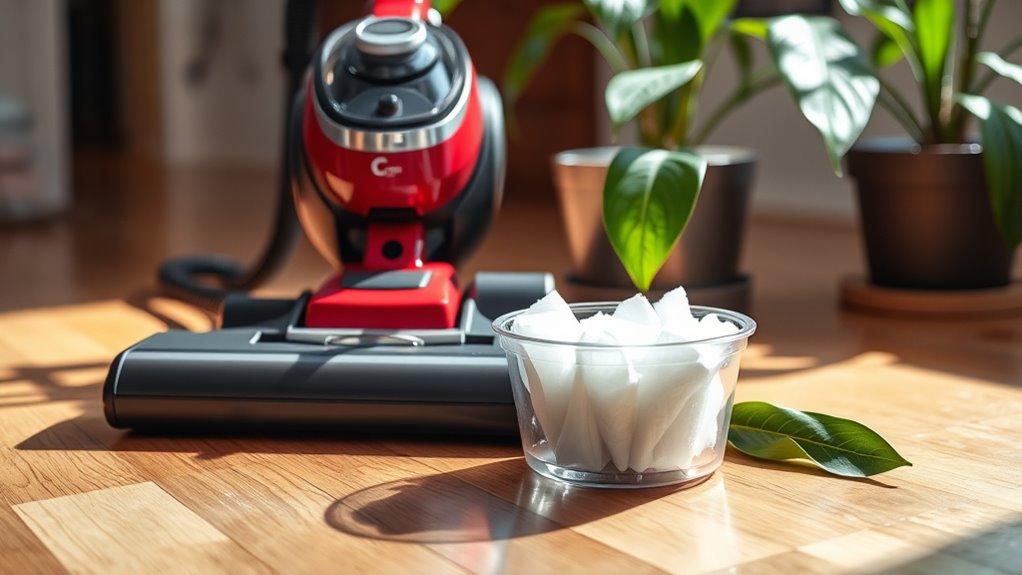
While using your vacuum, it’s crucial to be mindful of overheating issues that can shorten its lifespan. To prevent this, allow your vacuum to cool down for 15 to 20 minutes after continuous use.
Regularly check for clogs in the hose and filters, as blocked airflow can greatly heighten the risk of overheating. If you have a robot vacuum, avoid scheduling back-to-back cleaning sessions; give the motor time to cool down.
For upright vacuums, don’t run them continuously for more than 15 minutes, and switch off for at least 5 minutes if you notice signs of overheating.
Keeping filters and dust bins clean helps maintain ideal airflow, which can extend your vacuum’s lifespan and reduce overheating risks.
Proper Storage Practices
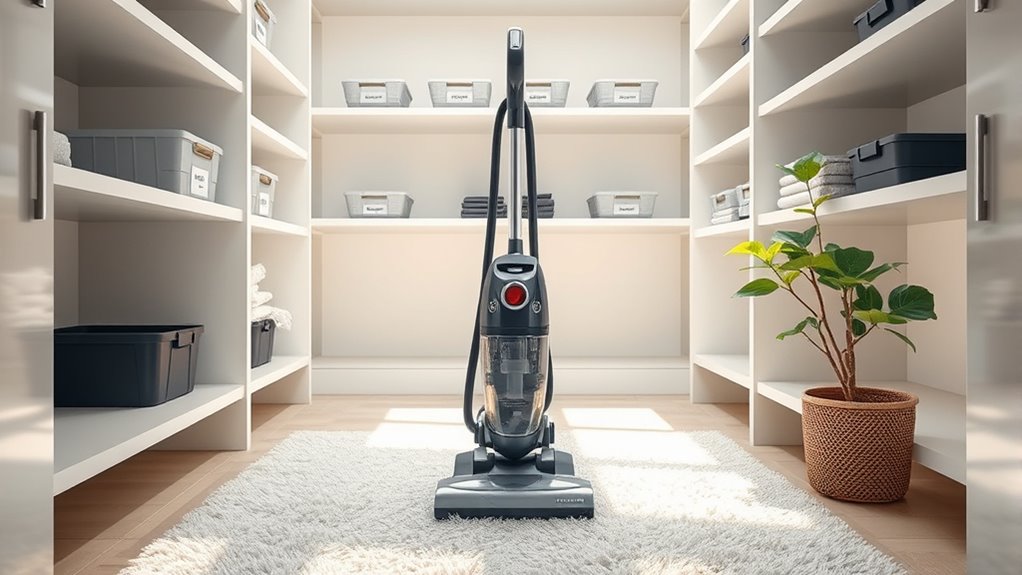
To keep your vacuum in great shape, store it in a cool, dry place away from humidity.
Make sure the storage area is clean and free from dust to protect its components.
Ideal Storage Location
Finding the right storage location for your vacuum cleaner is essential for maintaining its longevity. To keep your vacuum in good working condition, store it in a cool, dry place, away from direct sunlight and heat sources. This prevents humidity and dust accumulation, which can deteriorate its components.
| Ideal Storage Location | Tips for Storage | Benefits |
|---|---|---|
| Cool, dry place | Charge to 50% | Maintains battery life |
| Wall-mounted holder | Keep off the ground | Reduces accidental damage |
| Regularly clean area | Check for dust/moisture | Preserves functionality |
| Avoid sunlight | Use designated space | Protects from heat damage |
Following these practices will help keep your vacuum cleaner in top shape for years to come.
Protect From Humidity
Humidity can be a silent enemy to your vacuum cleaner, leading to mold growth and damaging its electrical components. To protect your vacuum, always store it in a dry area.
Avoid damp spaces like basements or bathrooms, as these can cause rust and deterioration of metal parts. Before putting your vacuum away, make sure it’s completely dry; residual moisture can trigger mold and mildew issues.
If you want extra protection against humidity, consider placing silica gel packets or using a dehumidifier in your storage area.
These simple steps can greatly reduce the risk of humidity-related damage, ensuring your vacuum stays in top condition for years to come. Protecting it now means less hassle later!
Keep Dust-Free Environment
Storing your vacuum cleaner properly goes hand in hand with protecting it from humidity. To extend your vacuum’s lifespan, always clean and empty it before storage. A full dustbin can lead to overflow and damage the motor over time.
When you store your vacuum, choose a dry, cool place, and consider keeping it in its original packaging or a protective cover to prevent dust accumulation. Regularly inspect the storage area for excessive dust or moisture. A clean environment guarantees your vacuum performs at its best.
Finally, maintain a consistent storage routine—store your vacuum promptly after use to shield it from debris and contaminants. This simple trick can greatly enhance your vacuum’s longevity.
Recognizing Signs of Wear and Tear
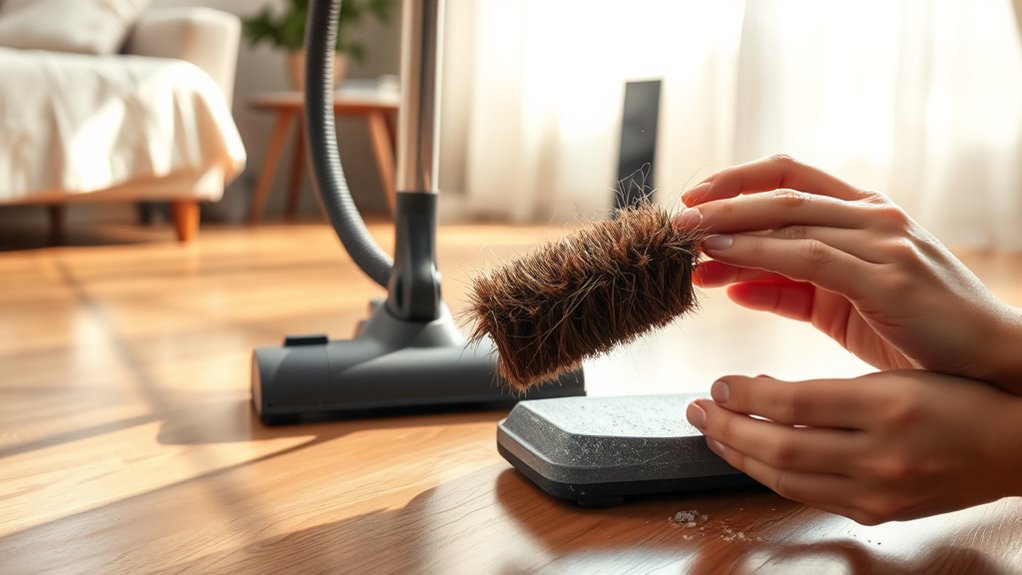
As you rely on your vacuum for maintaining a clean home, it’s crucial to recognize signs of wear and tear that could signal a decline in performance.
Pay attention to decreased suction power; this often indicates clogged filters or hoses. If you notice unusual noises or burning smells, it may mean worn-out belts or motor issues that need immediate attention.
Frequent clogs and jams suggest deeper problems, while visible damage like cracked housings or frayed cords can compromise safety.
Additionally, monitor for deteriorating brushes or irregular cleaning patterns, as these are clear signs of wear.
Addressing these issues early can help you maintain your vacuum’s functionality and extend its lifespan, ensuring it continues to tackle debris effectively.
Scheduling Routine Maintenance
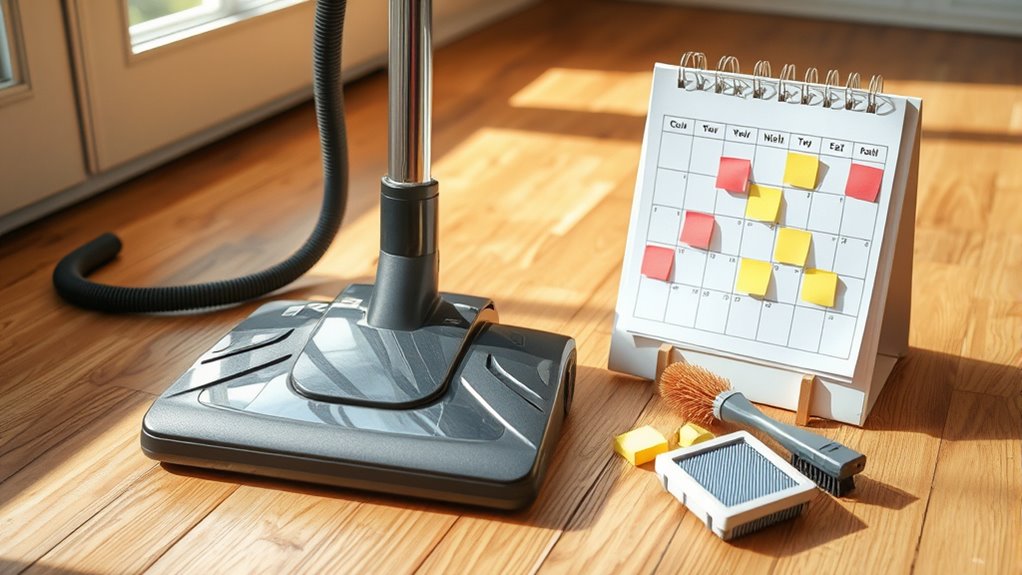
To keep your vacuum running smoothly, it’s essential to schedule routine maintenance checks at least once a year. This practice can identify hidden issues that affect performance and longevity, ensuring your vacuum remains in great shape.
Here are some key tasks to include in your maintenance schedule:
- Regularly empty dust bins or replace bags to prevent motor strain.
- Clean or replace filters every 2 to 3 weeks to improve airflow and suction.
- Inspect brushes and hoses for clogs or wear to maintain suction power.
- Keep track of maintenance tasks with reminders for consistent care.
- Address minor issues early to extend your vacuum’s lifespan.
Knowing When to Replace Parts
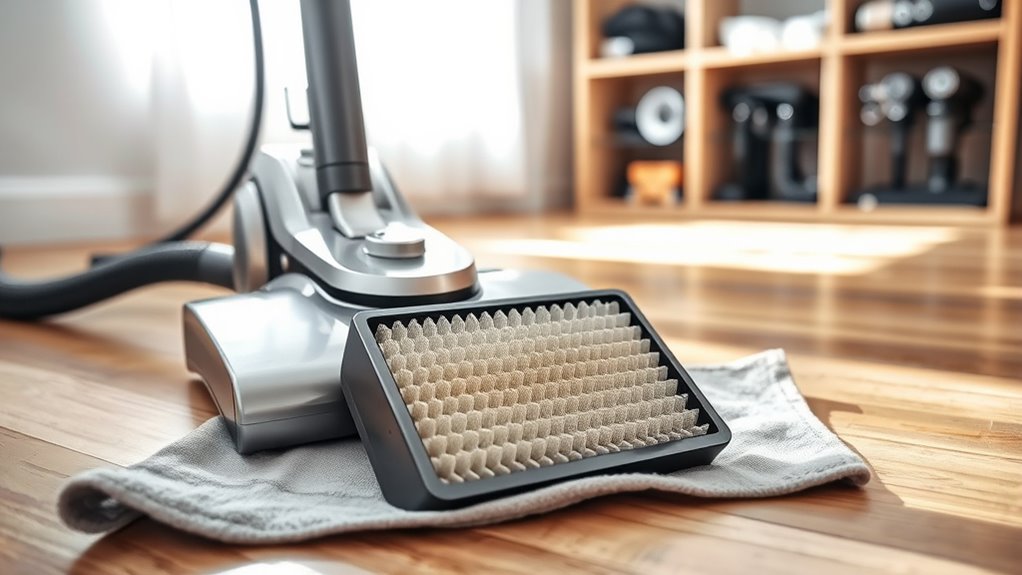
Even with regular maintenance, your vacuum will eventually need part replacements to keep it operating effectively. By knowing when to replace parts, you can guarantee peak performance and extend its lifespan. Regularly inspect components like brush rolls, filters, hoses, belts, and internal parts for signs of wear or damage.
| Part | Signs to Replace |
|---|---|
| Brush Rolls | Hair or debris build-up |
| Filters | Noticeably dirty or clogged |
| Hose | Blockages or visible wear |
| Belts | Signs of fraying or wear |
| Internal Parts | Decreased suction or strange noises |
Monitoring these parts will help maintain your vacuum’s efficiency. Don’t wait until performance drops; proactively replace components for sustained cleaning power.
The Benefits of Proactive Care

Proactive care not only keeps your vacuum running efficiently, but it can also considerably extend its lifespan.
By focusing on routine maintenance, you enhance its performance and reliability, ensuring it serves you well for years.
Here are some key benefits of proactive care:
- Regularly clean filters and brushes to boost suction power.
- Empty dust bins frequently to prevent motor strain.
- Inspect for clogs to avoid overheating issues.
- Establish a consistent cleaning schedule to catch problems early.
- Store your vacuum in a clean, dry area to prevent deterioration.
Investing time in these practices leads to a more effective cleaning experience while reducing the likelihood of costly repairs or replacements.
Your vacuum deserves your attention, and proactive care makes all the difference!
Frequently Asked Questions
How to Make a Vacuum More Effective?
To make your vacuum more effective, start by regularly cleaning the brushes and filters every couple of weeks. This’ll maintain strong suction power and reduce strain on the motor.
Empty the dustbin after each use to prevent overflow and overheating.
Focus on high-traffic areas during vacuum sessions, where dirt accumulates the most.
Finally, keep the charging dock clean and check for firmware updates to enhance performance and battery health.
Does Baking Soda Destroy a Vacuum?
You might think of baking soda as a hero in your cleaning arsenal, but does it destroy your vacuum? Not at all!
When used sparingly, baking soda can neutralize odors in your carpets. Just make sure to vacuum it thoroughly after letting it sit, or you risk clogging your filters.
A little goes a long way; too much can lead to build-up and reduced suction. Regular maintenance is key to keeping your vacuum running smoothly.
What Can I Put in My Bagless Vacuum to Make It Smell Good?
To make your bagless vacuum smell good, try sprinkling a bit of baking soda in the dustbin before you start cleaning. It absorbs odors and leaves a fresh scent.
You can also place essential oil-infused cotton balls or fabric squares in the dustbin for a pleasant aroma. Alternatively, add a few drops of your favorite essential oil to a paper towel and tuck it inside.
Regularly cleaning the dustbin helps keep things fresh, too!
Is It Better to Vacuum Slow or Fast?
It’s better to vacuum slowly.
When you take your time, you allow the vacuum to effectively suck up dirt and dust, ensuring a thorough clean. Rushing can lead to missed debris and strain on the motor, which might reduce suction power.
Conclusion
By taking these simple steps, you can dramatically extend your vacuum’s lifespan and keep it running like a superhero for years to come. Regular cleaning, monitoring filters, and maintaining brushes aren’t just chores—they’re your vacuum’s best friends. Don’t wait for signs of wear and tear; be proactive and schedule routine maintenance. With a little care, your vacuum can tackle dirt and dust like a champ, making your home cleaner and your life easier every day!
